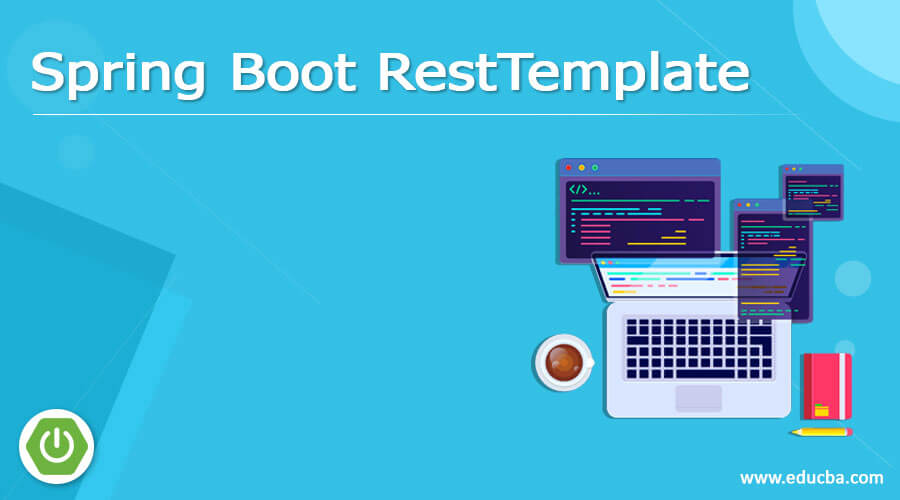

In this article, we will discuss how to use the Spring RestTemplate class to consume CRUD Rest web services.
From the documentation, RestTemplate is the synchronous client to perform HTTP requests, exposing a simple,
template method API over underlying HTTP client libraries such as the JDK HttpURLConnection, Apache
HttpComponents, and others.
This tutorial is explained in the below Youtube Video. Subscribe to my youtube channel to learn more about Spring boot at Java Guides - YouTube Channel.
We are building an application that uses Spring’s RestTemplate class to consume CRUD Rest web services. Basically, we will develop Rest client to consume CRUD RESTFul APIs for a Simple Employee Management System using Spring Boot 2, JPA and MySQL. Following are five REST APIs (Controller handler methods) are created for Employee resource.
I have written a separate article to build CRUD RESTFul APIs for a Simple Employee Management System at Spring Boot 2 JPA MySQL CRUD Example.
Please refer Spring Boot 2 JPA MySQL CRUD Example article to build a complete spring boot CRUD Rest
APIs
application. You can download the source code of this article from my GitHub repository -
https://github.com/RameshMF/spring-boot2-jpa-crud-example.
You can import this project in your IDE and make
sure that it is up and running.
In this next step, we walk through the CRUD Rest APIs for Employee resource.
package net.guides.springboot2.springboot2jpacrudexample.controller;
import java.util.HashMap;
import java.util.List;
import java.util.Map;
import javax.validation.Valid;
import org.springframework.beans.factory.annotation.Autowired;
import org.springframework.http.ResponseEntity;
import org.springframework.web.bind.annotation.DeleteMapping;
import org.springframework.web.bind.annotation.GetMapping;
import org.springframework.web.bind.annotation.PathVariable;
import org.springframework.web.bind.annotation.PostMapping;
import org.springframework.web.bind.annotation.PutMapping;
import org.springframework.web.bind.annotation.RequestBody;
import org.springframework.web.bind.annotation.RequestMapping;
import org.springframework.web.bind.annotation.RestController;
import net.guides.springboot2.springboot2jpacrudexample.exception.ResourceNotFoundException;
import net.guides.springboot2.springboot2jpacrudexample.model.Employee;
import net.guides.springboot2.springboot2jpacrudexample.repository.EmployeeRepository;
@RestController
@RequestMapping("/api/v1")
public class EmployeeController {
@Autowired
private EmployeeRepository employeeRepository;
@GetMapping("/employees")
public List< Employee> getAllEmployees() {
return employeeRepository.findAll();
}
@GetMapping("/employees/{id}")
public ResponseEntity< Employee> getEmployeeById(@PathVariable(value = "id") Long employeeId)
throws ResourceNotFoundException {
Employee employee = employeeRepository.findById(employeeId)
.orElseThrow(() -> new ResourceNotFoundException("Employee not found for this id :: " + employeeId));
return ResponseEntity.ok().body(employee);
}
@PostMapping("/employees")
public Employee createEmployee(@Valid @RequestBody Employee employee) {
return employeeRepository.save(employee);
}
@PutMapping("/employees/{id}")
public ResponseEntity< Employee> updateEmployee(@PathVariable(value = "id") Long employeeId,
@Valid @RequestBody Employee employeeDetails) throws ResourceNotFoundException {
Employee employee = employeeRepository.findById(employeeId)
.orElseThrow(() -> new ResourceNotFoundException("Employee not found for this id :: " + employeeId));
employee.setEmailId(employeeDetails.getEmailId());
employee.setLastName(employeeDetails.getLastName());
employee.setFirstName(employeeDetails.getFirstName());
final Employee updatedEmployee = employeeRepository.save(employee);
return ResponseEntity.ok(updatedEmployee);
}
@DeleteMapping("/employees/{id}")
public Map< String, Boolean> deleteEmployee(@PathVariable(value = "id") Long employeeId)
throws ResourceNotFoundException {
Employee employee = employeeRepository.findById(employeeId)
.orElseThrow(() -> new ResourceNotFoundException("Employee not found for this id :: " + employeeId));
employeeRepository.delete(employee);
Map< String, Boolean> response = new HashMap< >();
response.put("deleted", Boolean.TRUE);
return response;
}
}Let's develop Spring Rest client for above CRUD Rest APIs using RestTemplate class.
package net.guides.springboot2.springboot2jpacrudexample;
import java.util.Arrays;
import java.util.HashMap;
import java.util.Map;
import org.springframework.http.HttpEntity;
import org.springframework.http.HttpHeaders;
import org.springframework.http.HttpMethod;
import org.springframework.http.MediaType;
import org.springframework.http.ResponseEntity;
import org.springframework.web.client.RestTemplate;
import net.guides.springboot2.springboot2jpacrudexample.model.Employee;
public class SpringRestClient {
private static final String GET_EMPLOYEES_ENDPOINT_URL = "http://localhost:8080/api/v1/employees";
private static final String GET_EMPLOYEE_ENDPOINT_URL = "http://localhost:8080/api/v1/employees/{id}";
private static final String CREATE_EMPLOYEE_ENDPOINT_URL = "http://localhost:8080/api/v1/employees";
private static final String UPDATE_EMPLOYEE_ENDPOINT_URL = "http://localhost:8080/api/v1/employees/{id}";
private static final String DELETE_EMPLOYEE_ENDPOINT_URL = "http://localhost:8080/api/v1/employees/{id}";
private static RestTemplate restTemplate = new RestTemplate();
public static void main(String[] args) {
SpringRestClient springRestClient = new SpringRestClient();
// Step1: first create a new employee
springRestClient.createEmployee();
// Step 2: get new created employee from step1
springRestClient.getEmployeeById();
// Step3: get all employees
springRestClient.getEmployees();
// Step4: Update employee with id = 1
springRestClient.updateEmployee();
// Step5: Delete employee with id = 1
springRestClient.deleteEmployee();
}
private void getEmployees() {
HttpHeaders headers = new HttpHeaders();
headers.setAccept(Arrays.asList(MediaType.APPLICATION_JSON));
HttpEntity < String > entity = new HttpEntity < String > ("parameters", headers);
ResponseEntity < String > result = restTemplate.exchange(GET_EMPLOYEES_ENDPOINT_URL, HttpMethod.GET, entity,
String.class);
System.out.println(result);
}
private void getEmployeeById() {
Map < String, String > params = new HashMap < String, String > ();
params.put("id", "1");
RestTemplate restTemplate = new RestTemplate();
Employee result = restTemplate.getForObject(GET_EMPLOYEE_ENDPOINT_URL, Employee.class, params);
System.out.println(result);
}
private void createEmployee() {
Employee newEmployee = new Employee("admin", "admin", "admin@gmail.com");
RestTemplate restTemplate = new RestTemplate();
Employee result = restTemplate.postForObject(CREATE_EMPLOYEE_ENDPOINT_URL, newEmployee, Employee.class);
System.out.println(result);
}
private void updateEmployee() {
Map < String, String > params = new HashMap < String, String > ();
params.put("id", "1");
Employee updatedEmployee = new Employee("admin123", "admin123", "admin123@gmail.com");
RestTemplate restTemplate = new RestTemplate();
restTemplate.put(UPDATE_EMPLOYEE_ENDPOINT_URL, updatedEmployee, params);
}
private void deleteEmployee() {
Map < String, String > params = new HashMap < String, String > ();
params.put("id", "1");
RestTemplate restTemplate = new RestTemplate();
restTemplate.delete(DELETE_EMPLOYEE_ENDPOINT_URL, params);
}
}SpringRestClient class contains a main() method so just right click and run as Java Application. You will see below output in the console: